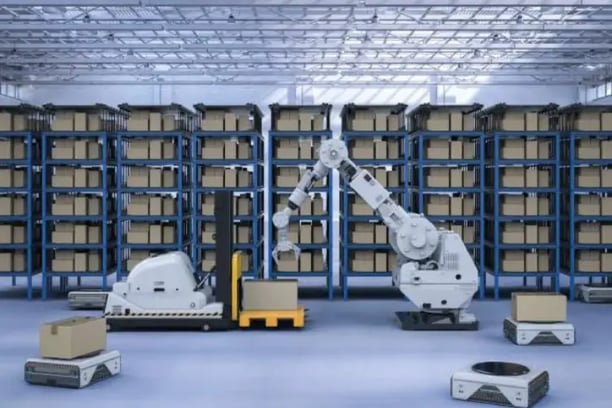
Five Ways AI Based on Reinforcement Learning Is Changing Retail
 Gary Saarenvirta
Gary Saarenvirta
The next time someone tells you that artificial intelligence will completely disrupt how retail stores operate, stop and ask what kind of artificial intelligence (AI) they mean.
The two letters in “AI” cover many different approaches -- and sometimes they are used to describe things that aren’t AI at all.
Instead of worrying about whether your website needs a chatbot or outfitting grocery carts with sensors, shifting the conversation to reinforcement learning in AI (a branch of artificial intelligence) will lead you to the most valuable opportunities.
Imagine, for example, an AI tool is used to design a grocery store.
Based on how many people go through the express checkout lanes, the system decided to only have two lanes in the entire store. It wouldn’t take long before lineups grew too long and customers became angry. The AI tool would quickly recognize the problem and add more aisles.
In real life, reinforcement learning tackles much more complicated questions and scenarios but the same idea applies: an agent observes what’s happening, takes an action, judges whether it’s good or bad, and adjusts behavior accordingly.
Five ways AI-based reinforcement learning can deliver value to retailers today
Heavy-Lifting Robots That Learn How Best to Pick and Pack

Bringing robotics into a warehouse or factory environment isn’t new, but it’s been complicated by the challenge of teaching robots to do their jobs. When you break down all the steps in picking up a box and putting it in a container, there’s a lot to teach. Unlike humans, robots put in these jobs are essentially picking things up for the first time.
Reinforcement learning allows these robots to learn on the job without someone correcting them at every turn. All it takes is the ability for a robot to record itself picking and packing items and create a record it can study and use to improve its technique. Unlike humans, who tend to repeat their mistakes, reinforcement learning brings a greater degree of reliability for robot helpers.
Warehouses That Maximize the Use of Space

How long does it take to restock your best-selling items? How much extra stock or overstock needs to be available, just in case? When warehouse space is wasted, even in small ways, it leads to major cost issues for all types of retailers.
Reinforcement learning-based technology can analyze a range of inventory demand and supply scenarios far beyond the scope of even the smartest manager. It means shorter transit times for stocking, faster replenishment rates and ultimately, happier customers.
Prices That Are Always Right

You’re selling a lot of ham as it gets closer to Easter, which is great. What happens, though, when your competitor suddenly puts hams on sale? Sometimes, you can guess those kinds of things, but too often they sneak up on retailers without warning.
Consider how many consumers are not only wandering around store aisles but scanning their smartphones for better deals. Reinforcement learning can model and anticipate market changes to allow dynamic pricing. This prevents consumers from shopping somewhere else or simply deciding to wait for a sale.
Deliveries Based on The Best Possible Routing

Customers are still visiting stores, but they also expect items to be delivered to their homes. Managing a fleet of vehicles has always been difficult, however. Are routes for vehicles based on assigning a particular truck to a specific neighborhood, or are there ways to split up the work more efficiently?
This is a perfect area where simulating all the possible choices — and landing on the best ones — allows retailers to leverage AI based on reinforcement learning to compete more effectively on service, as well as product and price.
E-commerce Personalization That Treats You Like A Person

We’ve all probably had a moment where an online checkout experience ended with a screen saying “Customers like you also bought . . .” and saw items that were laughably irrelevant to our interests. Many of the recommendation engines today are too simplistic in how they try to compare shopper behavior, and it shows.
Reinforcement learning changes that because it studies things like whether or not a shopper acts on those recommendations, and figures out how to make better ones the next time around. Instead of ignoring what an e-commerce site suggests, we’ll start to pay attention and show our appreciation with more purchases.
There’s more than this, of course, but hopefully, you get the point. The truth about “AI in retail” is all about reinforcement learning. Now is the time to study up.
To learn more about, how Daisy’s AI-powered technology helps retailers and insurance companies drive higher profits and revenue, drop us a note.

Gary Saarenvirta
Daisy’s Founder and CEO, and a preeminent authority on artificial intelligence and its ability to transform how businesses grow. He is also a member of Daisy’s board.




